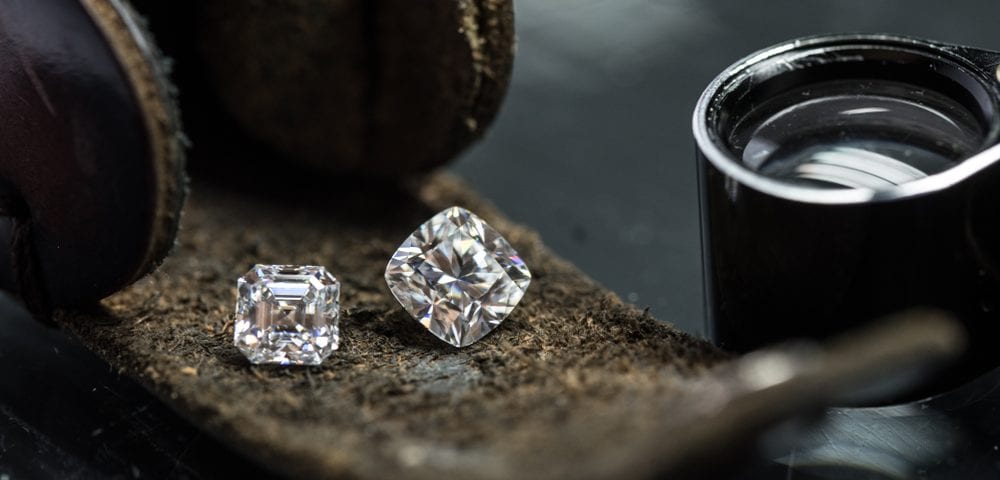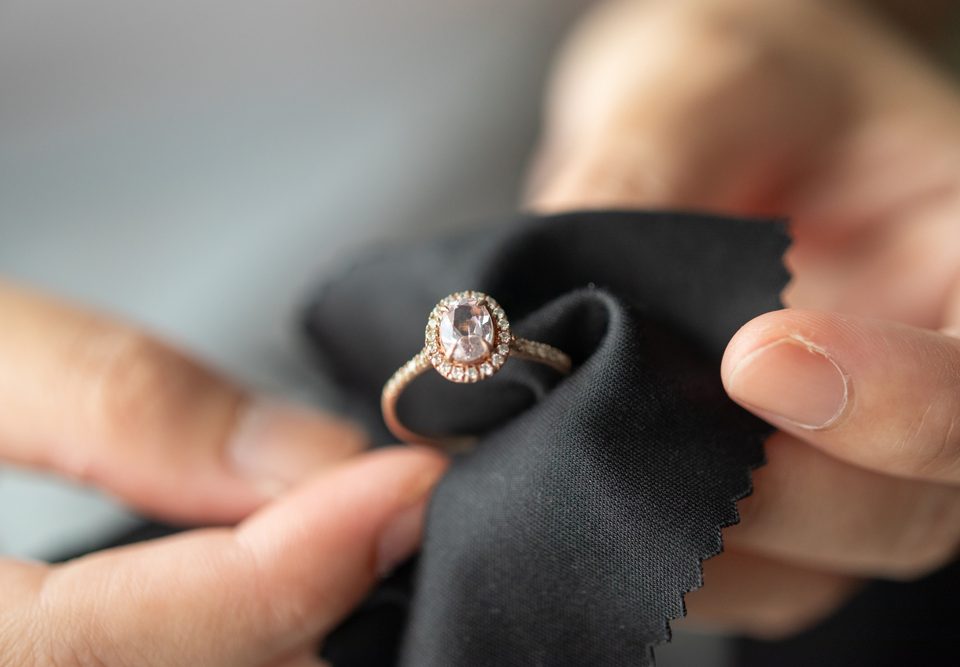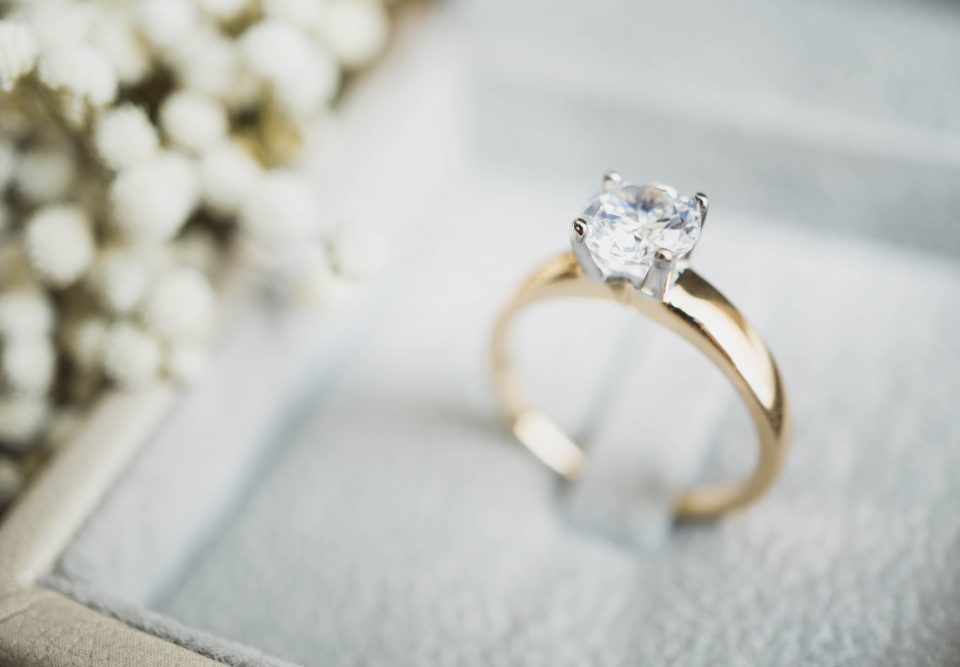- Quick contact:
- 801.359.2035
Diamond Rings in Utah: Lab-Grown vs. Natural Diamonds

Did you know that real diamonds can be grown in a lab? And we’re not talking about cubic zirconia. Scientists have been growing diamonds that are chemically identical to naturally occurring diamonds since the 1950s. However, it is only in the last decade that technology has advanced to a point where synthetically produced diamonds are virtually identical to natural diamonds. Here is everything you need to know about lab grown versus natural diamonds for the next time you go to the jeweler in Utah.
How are natural diamonds made?
Almost any real, naturally occurring diamond you encounter will be about one billion years old or older. These diamonds started in the earth’s mantle, far below the earth’s crust. There, the pressure and temperature are extremely high, and just right for growing diamonds. Under the wrong conditions, carbon, when heated up and pressurized, can turn to graphite instead of diamond. Through the chemical process, the diamonds become extremely strong due to their crystalline chemical structure.
The carbon particles that did manage to turn to diamond were then shot up to the earth’s surface via volcanoes and deposited in the earth’s crust. The sudden temperature change locks the diamonds’ chemical structures into place, making them extremely durable. After they are mined and processed, these are the diamonds we see in jewelry stores today.
How are lab-grown diamonds made?
The first lab-grown diamonds were small, discolored, and not particularly suitable for jewelry. They were primarily used to make tools, such as drill bits. The earliest successful method for growing diamonds synthetically was called high pressure high temperature (HPHT). HPHT mimics the natural conditions that create diamonds in nature, but makes the process much quicker.
Today, however, there is a new method for growing diamonds that can be done at much lower temperature and pressure, but still at a high speed. This method is called chemical vapor deposition (CVD), and begins with a diamond seed. A diamond seed is a tiny crystal of diamond, made synthetically or mined naturally. It is often the width of a single strand of human hair, and starts out yellow because it contains nitrogen. To grow the diamond seed, the scientist will put the seed into the CVD system and remove all of the air from the system’s chamber to create a vacuum. Then, the scientist will add hydrogen gas, which is heated up by microwaves until it turns to plasma. From there, the scientist will add methane gas, which the hydrogen breaks down into a carbon-containing growth species. The presence of the hydrogen ensures that the carbon won’t turn to graphite.
While the diamond is left to grow, carbon atoms pile on top of the diamond seed in the cubic structure that natural diamonds contain. The time elapsed before the finished product is ready depends on the system and on how many karats the scientist is growing. Some systems can grow a diamond at a rate of one carat per week, but some systems are capable of growing 10 to 20 carats of diamond in a matter of hours.
What are the differences between lab-grown and natural diamonds?
Chemically, nothing. Lab-grown diamonds have the exact same chemical structure as natural diamonds, and they are just as durable. In fact, they’re purer than natural diamonds because of the controlled nature of the growth process. Scientifically, they are “real” diamonds.
However, lab-grown diamonds are less valuable than natural diamonds — between 30 and 50%. While it’s true that both types of diamonds have the appeal of glitz and sparkle, there is undoubtedly something uniquely romantic about natural diamonds. Almost any natural diamond is at least 5,000 times older than the entire human species. A natural diamond has lived through the rise and fall of empires, all of the Ice Ages, and the entirety of the time dinosaurs were on earth. Not only that, but natural diamonds are rare and one-of-a-kind. Unlike so much of what we consume, natural diamonds are not mass produced. If you want to show a special someone you love them, there’s nothing like a natural diamond ring.
There is also the difference in value to consider. If you buy a man-made diamond now, its value may decrease significantly over time as technology improves to make lab-grown diamonds more ubiquitous. In fact, the value of lab-grown diamonds has already dropped sharply over the past few years with recent technological advances. Although you’d be purchasing your man-made diamond at a 30 to 50% discount, it’s still a big investment. And not only will the resale value be much lower than when you made your purchase, you’ll also be missing out on the 50% resale value increase that typically results from investing in a natural diamond. This is something to consider when weighing your options for purchasing a diamond.
Should I be worried about unknowingly being sold a lab-grown diamond?
In short, not yet. Although we don’t know how diamond-growing technology will advance in the next several years, for now, there is sophisticated, state-of-the-art testing that can determine the origin of any diamond. The Gemological Institute of America (GIA), for example, offers this testing in their labs around the world. They test tens of thousands of diamonds every day, and it takes between one and two seconds per stone.
Where to Find Certified diamonds in Utah
You can be sure you’re getting what you pay for when you go to a jeweler you trust. If you’re looking for certified diamonds in Utah, AAA Jewelers is your best bet. They’re a family business that’s been operating in Utah since 1946. In addition to generations of knowledge of jewelry, AAA Jewelers also has certified GIA gemologists on staff, so you can be confident in your purchase of a natural diamond.
AAA Jewelers is one Utah jeweler where you can be sure of what you’re getting. AAA Jewelers carries wedding rings, engagement rings, fashion jewelry, and more. They even do custom jewelry designs. These GIA diamonds in Utah — sold at wholesale pricing — are ones you can trust.



